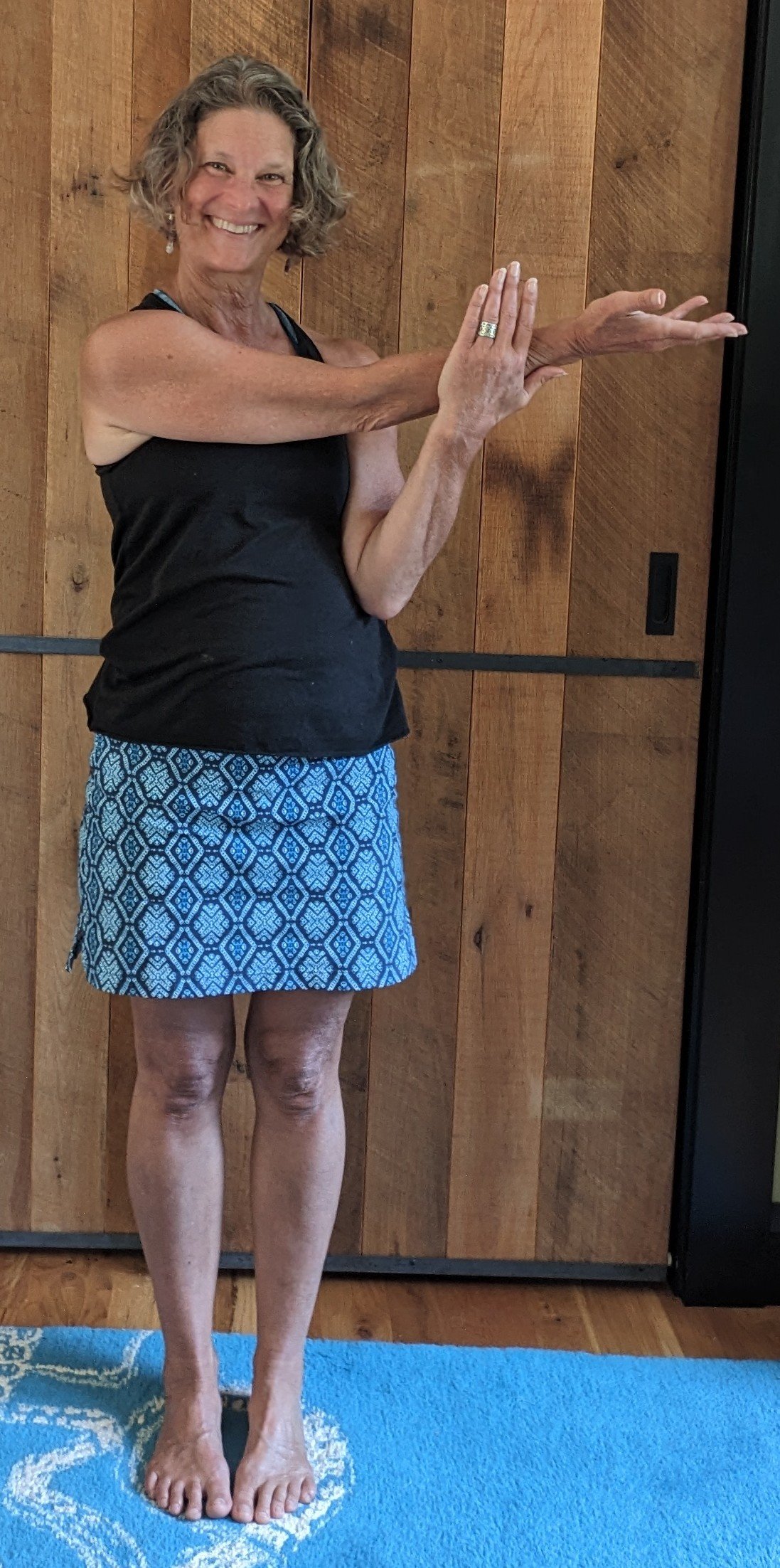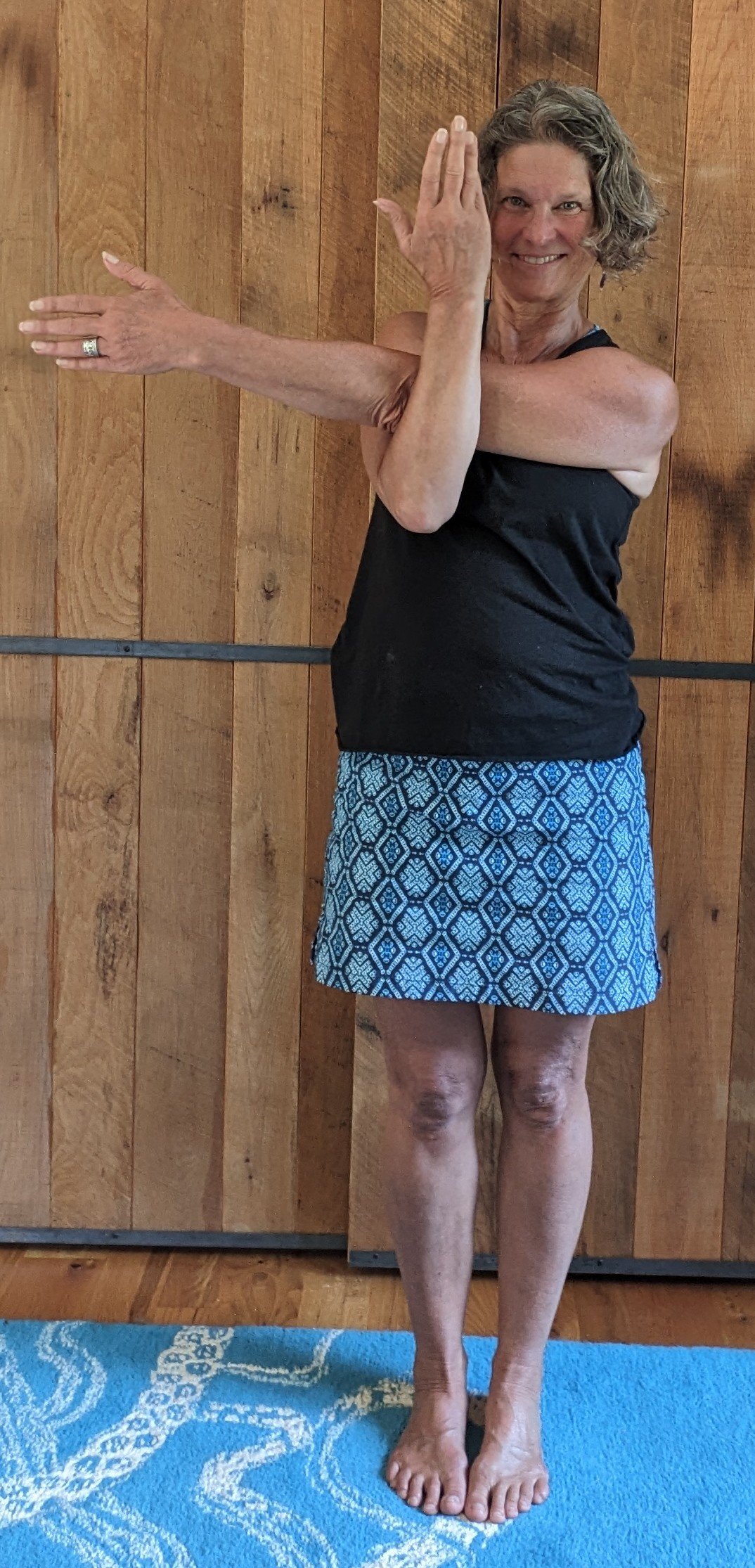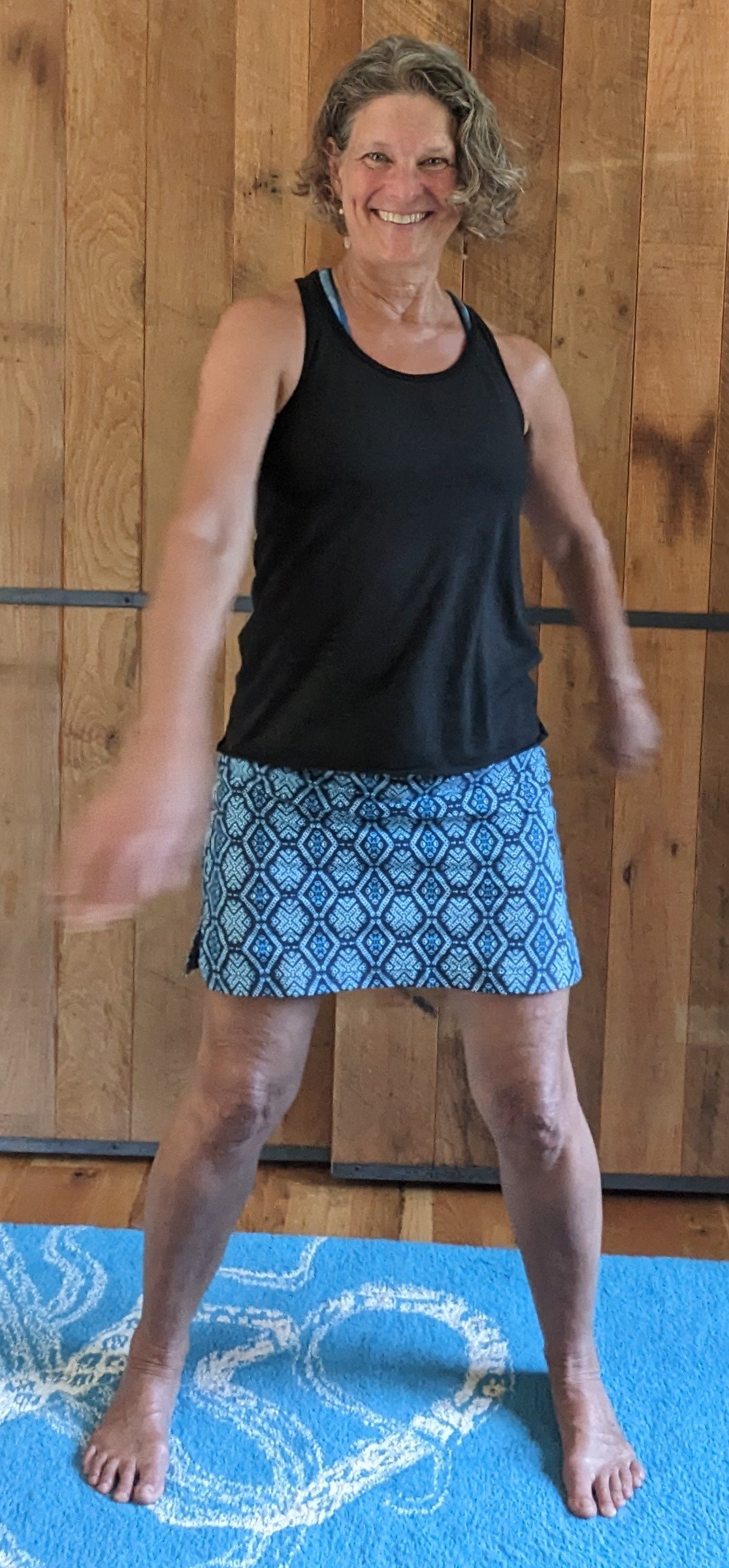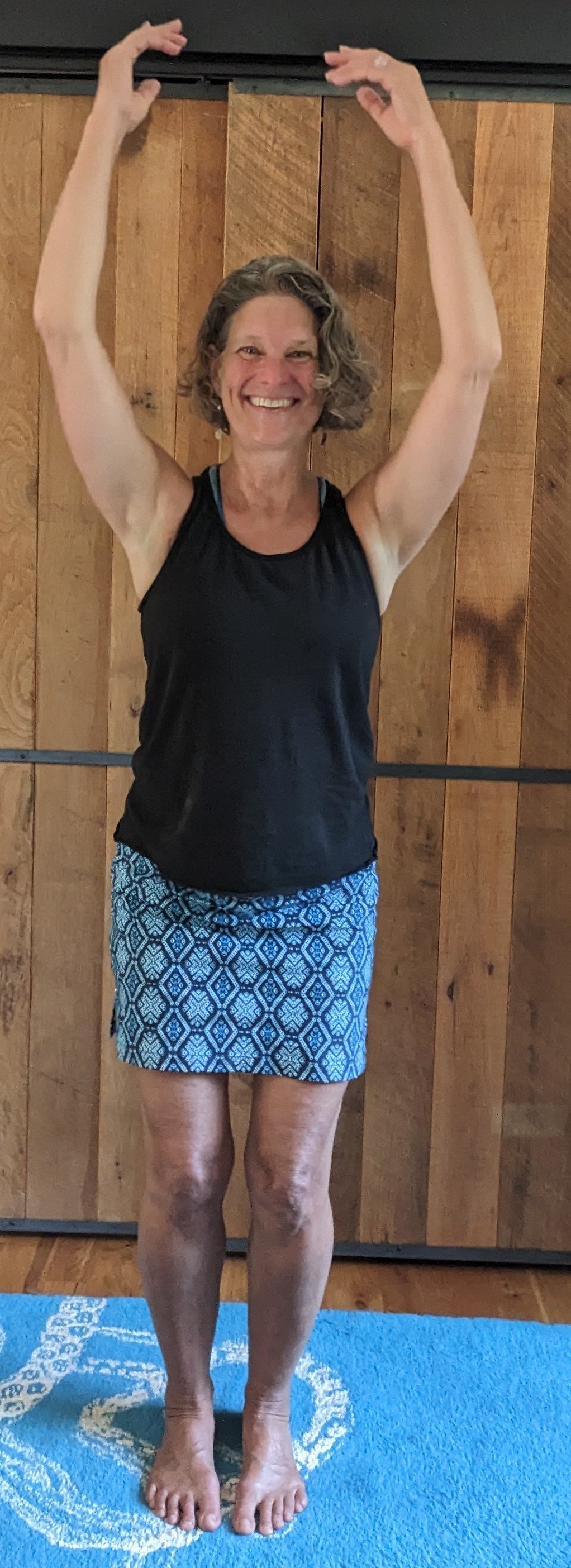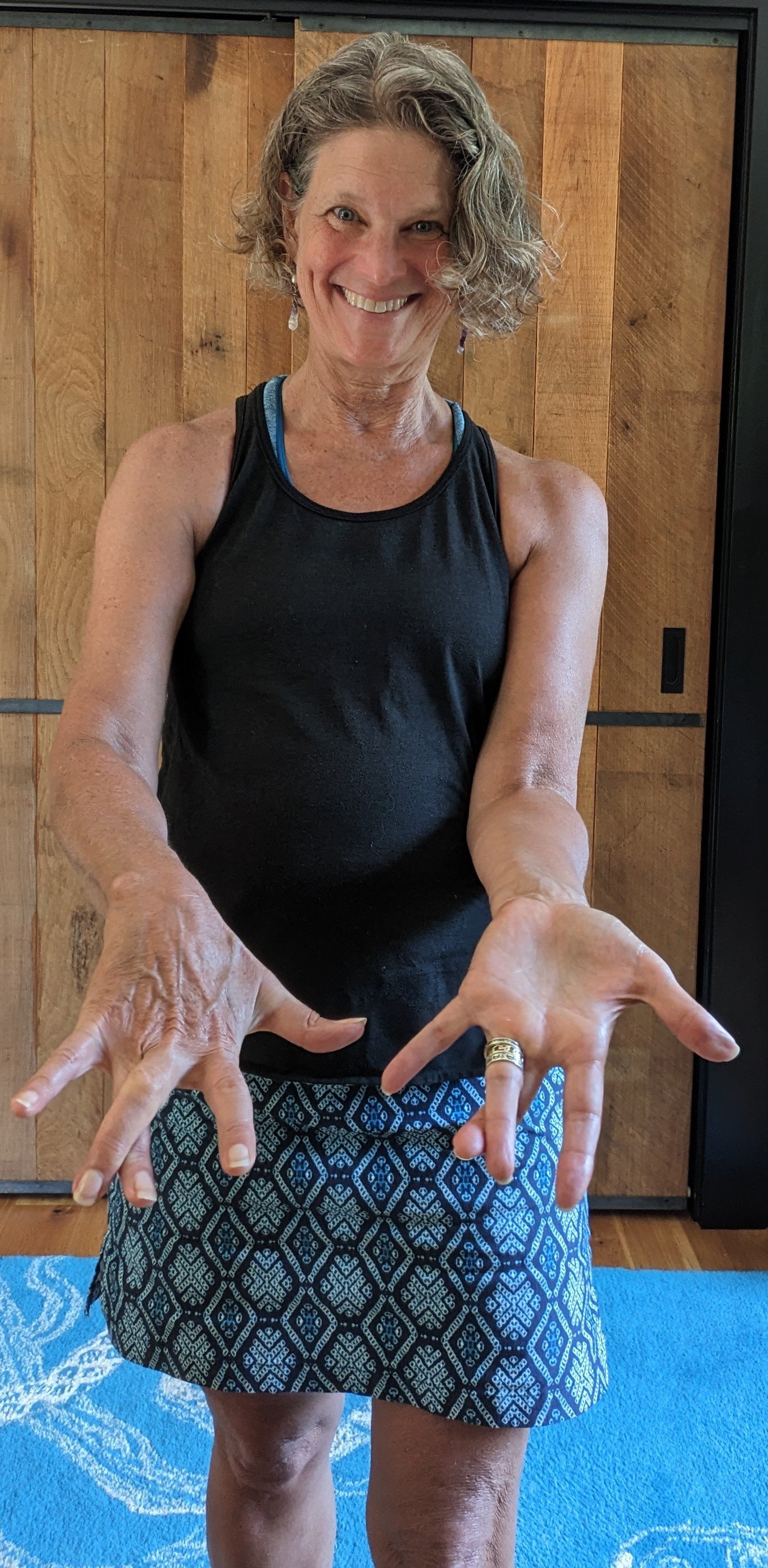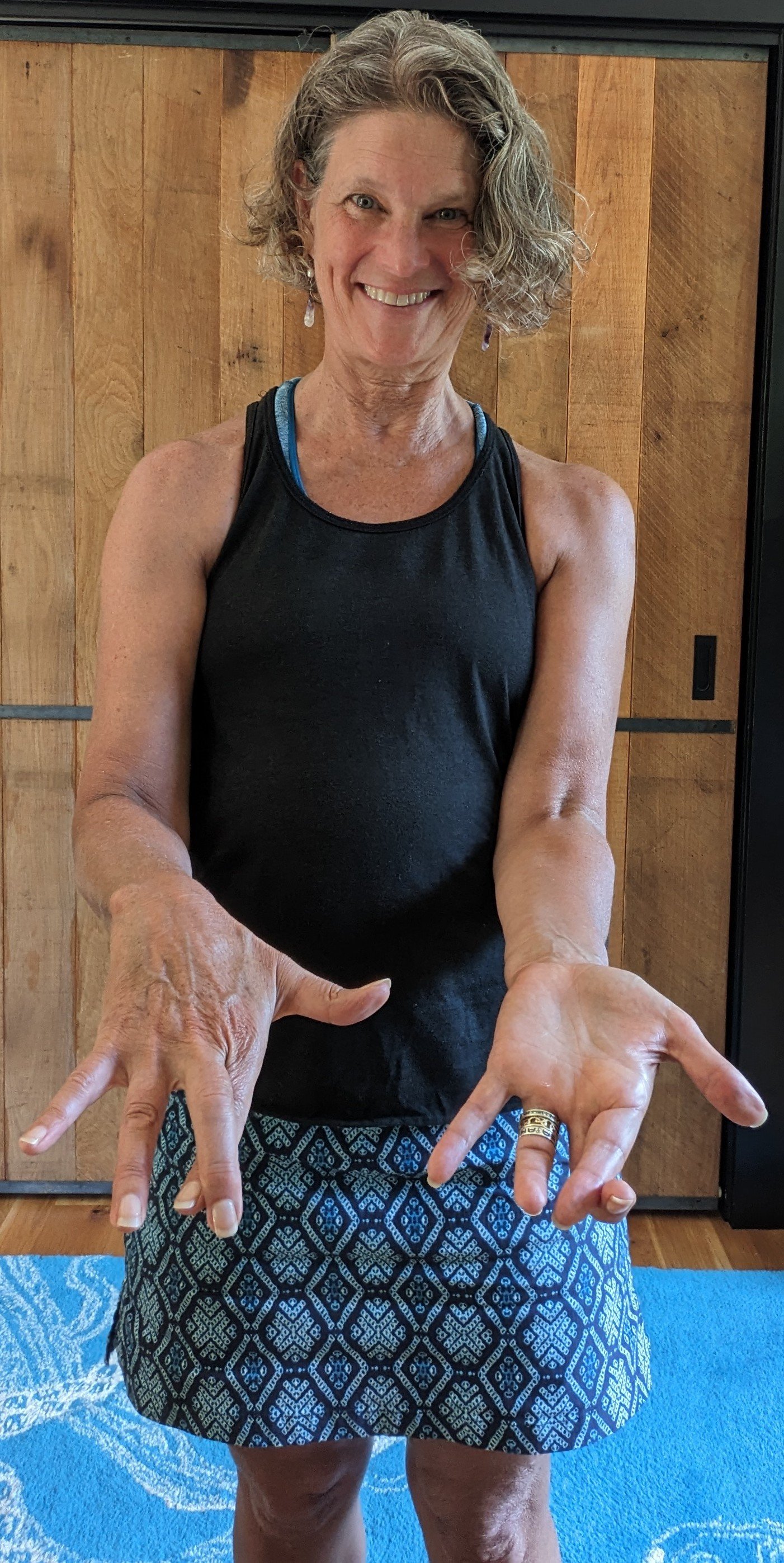This is Part 4* of the 7-Part Gentle Rewilding series!
We’ve been tamed, y’all. Modern life molds and changes our bodies, minds and spirits. Much of our modern domestication is just fine: I’m glad we use forks and don’t spit inside and don’t drink milk straight out of the carton (oh wait, I do that). But some of our taming is worth questioning and unwinding. This series is an exploration of ways of reconnecting to our human design with gentle rewilding.
* Find Part 1 – Gentle Rewilding & Feet here.
* Find Part 2 – Gentle Rewilding: Hands here.
* Find Part 3 – Gentle Rewilding: Spine here.
The weight of the world on your shoulders.
Shouldering the load.
Putting your shoulder to the wheel.
In English, we metaphorically refer to shoulders as parts that carry a burden or take the work. While it’s true that functionally, the shoulders can be strong, they also allow a wide range of movement which can also make them vulnerable to injury and stress.
Unlike the deep bone socket of the hip, the shoulder sits more like a golf ball on a tee. As I wrote in a post a while back, the hip joint is like a travel mug in a car’s cup holder and the shoulder is like a tea cup in a saucer. In the post I wrote:
The upper arm bone, the humerus, actually floats – it is not anchored into a ball and socket joint like the femur is to the hip. There is only a shallow indentation where the head of the arm bone rests. The support comes muscularly from underneath, around, and inside the shoulder, demonstrating that the shoulder is designed to support free movement in a wide range of directions but not to bear a lot of weight.
Gently rewilding the shoulders asks us to use and train the shoulders in alignment with how they are designed: for wide reaching (think gathering berries) as well as pulling in (think gathering a loved one in for a hug) and pushing away (pushing a cart stuck in the mud).
Modern life corrals us into using our shoulders in a much more limited way that they are meant to be used. Rounding forward over keyboards and steering wheels, leaves the muscles at the back of the shoulders (and upper back) weak and overstretched, the muscles at the front of the shoulders (and chest) tight with restricted mobility.
Even a limited number of sleep positions can cause shoulder issues. I am a hard-core right-side-sleeper, but when I do, I notice that when I wake up my right shoulder feels like someone punched me. Hard. I’ve been doing my best to sleep in other positions, but I keep ending up on my right side. Turns out that breaking my right-side-sleeping habit is devilishly difficult.
Since noticing my sleeping imbalance and the soreness in my right shoulder, these are my current favorite shoulder moves for gentle rewilding!
Gentle Rewilding: Shoulders
It’s important to go gently and slowly as we stretch the shoulders given their “lightly held” socket and their tendency to hold tension and stress. Easy does it is the way here!
Doorway stretch.
Place your palms at about shoulder height on either side of a door frame and gently lean into the doorway. Open your chest and breathe breathe breathe.
Ahhhh! Ease your chest ahead of your hands!
Wrap and stretch.
Wrap your right arm under your left, bend both elbows and gently pull your left shoulder to the right. Lift and lower your elbows slightly and play with other micro movements that feel good. Shake it out and do the other side.
If the bent arm version feels too intense or the wrap just isn’t working for you, you can draw one arm across your body with the other, gently pulling at your upper arm or lower arm (avoiding your elbow) while keeping your shoulder away from your ear. Play with different palm directions for different sensations.
Arm swings.
Ever see a swimmer standing on the blocks getting ready for a race? They’ll often swing their arms front and back, side to side and wrap around. Swimmers use the bejeezus out of their shoulders so they know how to get them ready for movement! Swing away!
Shoulder hang.
I’ve been wanting a hanging bar for years and my beloved Frank installed one for my birthday last month! I’m still getting used to the feeling in my hands, arms and shoulders as I let myself hang and even swing a little from the bar. You can start with your feet on the ground and gradually allow more weight to come into the hang. We are designed to do this movement and it’s one that we often miss. There is simply no replicating the sensation of hanging.
Start slowly and gradually add weight, then time, then movement to your hang!
Bonus passive stretch: Finger crosses.
Most all of us have a postural tendency to either round shoulders forward (think hunched over a keyboard or phone) or overreach them back (think military posture). If you, like me, are a shoulder rounder, cross your middle finger over your ring finger and you’ll feel your shoulders drop back. If you tend to puff your chest up and bring your shoulders way way back, cross your middle finger over your index finger to soften your shoulders forward and relax your ribs. You can hold your fingers like this while walking, waiting in line, any time you want a passive realignment!
Whether you are healing a sleep injury (ha!) like I am or you are carrying the weight of the world on yours, give some gentle rewilding to your sweet shoulders.






